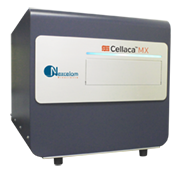Bioprocessing Solutions
Protein-based therapy production begins with cell engineering.
Most biologic therapies are produced in engineered mammalian cell lines, with the goal of introducing advantages that turn these cells into tiny protein factories. Unfortunately, this approach is hampered by inherent limitations of slow growth, limited productivity, and low-stress resistance. One way to overcome these obstacles is host cell engineering, including gene introduction, overexpression, knockdown, and posttranscriptional silencing [Fischer et al. 2015].
Bioprocessing Solutions
For example, scientists may:
- Overexpress beneficial genes
- Silence or knockout disadvantageous genes
- Use miRNA to amplify cellular signaling pathways
CHO engineering is important to:
- Enhance cellular productivity
- Optimize growth
- Help cells resist apoptosis
- Increase protein expression
- Optimize glycosylation
- Promote robust secretion
The goals of these modifications are to engineer host cells that:
- Are stable (maintain transgenes)
- Can grow in serum-free medium (an FDA requirement for biologics)
- Produce high levels of protein with appropriate PTMs
This section provides examples of how Nexcelom solutions can help scientists:
- Use gene editing technology like CRISPR to engineer cell lines
- Develop protocols to transduce, transfect, and maintain engineered cell lines
- Choose media formulations to optimize cell growth, viability, and protein production
- Select single cells to establish clonal populations with stable phenotypes
The Cellaca MX high-throughput cell counter and Celigo Image Cytometer are used for 6 major areas in cell line development and bioprocessing:
- Monitoring and tracking gene expression after gene editing with CRISPR, siRNA, or transfection/transduction, etc.
- Optimize transfection and transduction efficiency
- Determining monoclonality for developing cell line using FACS, limiting dilution, or cell printing techniques
- Media and cell line optimization for biologic-producing cell lines
- Hybridoma and antibody screening assays for identifying target cell lines
- High-throughput cell counting and viability measurement during the bioprocessing workflow
In this section, we will demonstrate example assays using the Cellaca MX high-throughput cell counter and the Celigo Image Cytometer


